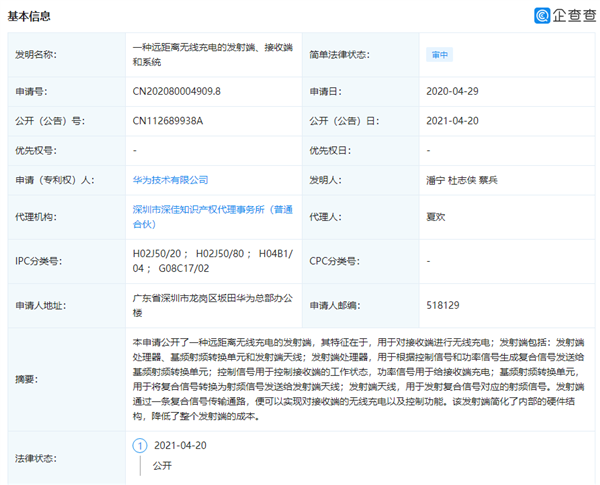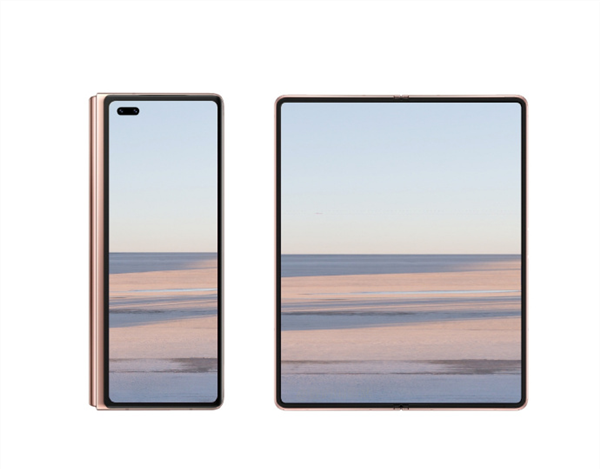Some time ago, Xiaomi’s leading industry released an air-space wireless charging solution, which can completely free the mobile phone from the shackles of the charging cable and realize the effect of charging at any time.
Although it has not yet been used in mass production models, it is still impressive.
Now, Huawei has to study this technology.
According to data from the national patent website, Huawei Technologies Co., Ltd. published an invention patent entitled “A Transmitter, Receiver, and System for Long-distance Wireless Charging” on April 20. The publication number is CN112689938A, and the application date is 2020. April.
The patent abstract shows that this application discloses a long-distance wireless charging transmitter, which is characterized in that it is used to wirelessly charge the receiver.
The transmitting end includes: a transmitting end processor, a baseband radio frequency conversion unit and a transmitting end antenna.

Among them, the transmitter processor is used to generate a composite signal according to the control signal and the power signal and send it to the baseband radio frequency conversion unit.
The control signal is used to control the working state of the receiving end, and the power signal is used to charge the receiving end.
The baseband radio frequency conversion unit is used to convert the composite signal into a radio frequency signal and send it to the transmitting end antenna.
The transmitter antenna is used to transmit the radio frequency signal corresponding to the composite signal.
The transmitting end can realize the wireless charging and control functions of the receiving end through a composite signal transmission path.
The transmitter simplifies the internal hardware structure and reduces the cost of the entire transmitter.
From the perspective of patent introduction, Huawei’s “air charging” technology uses a special “antenna” technology, which is slightly different from the previous plans of Xiaomi and OPPO.
However, a more flexible charging effect should be achieved, and the cost of the charger will also be reduced, which is more conducive to popularization.





